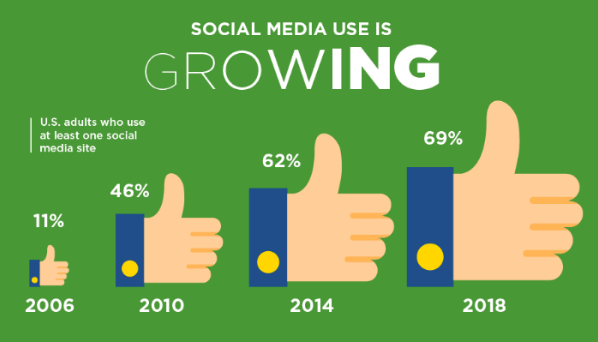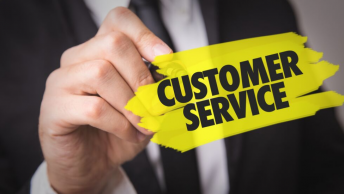Rebranding an already established local business is no easy task. Here are 6 tips to make your rebrand a success!
Why Rebrand?
Rebranding can seem like a complicated process. Every rebrand is different, because every local business is different, and the reasons behind a rebrand also can be different from brand to brand.
Here are a few common reasons why businesses might consider rebranding:
- Their business has changed and grown since it started, and their image no longer matches it.
- They moved to a new location.
- They want to revitalize their business.
Regardless of the reasons, they should be solid and focused, because rebranding requires a lot of work.
SEE ALSO: How to Digital Rebrand Your Small Business
Here are some helpful tips to make your rebrand a smashing success!
Get Your Customers Involved

If you are looking for a whole new audience or even just to expand your current audience, it could definitely be worthwhile to get you customers involved in the rebranding process.
Survey your customers on what they already like about your brand, so the change doesn’t throw out all of the popular elements of your branding. Learn what drew your customers to your local business in the first place and what makes them stick around.
You can even show customers potential logos and ask them to vote on their favorite. This will help them feel involved in your brand and business, which is key to building a brand-customer relationship.
You can take this process to social media if you like and be sure to emphasize your commitment to keeping your loyal customers happy. Remember that you can be as public or private with this process as you like, however.
You Don’t Have To Change Everything At Once
While you should be enthusiastic and excited about your rebrand, that doesn’t mean you have to rush in and overhaul every aspect of it at once. Unless your goal is to dramatically pivot your small business and get an entirely new customer base, there is not really any need to change everything overnight.
Smaller adjustments over time will lessen the risk of alienating customers who liked things as they are, because its less of shock. If you involve your customers in your rebranding strategy, this risk is even smaller.
If changing your name, it might be useful to keep elements of your original name. Also, for the sake of your SEO, it might not be the best idea to drastically change everything.
If you suddenly launch a new website with a new name, new tone, and new content, your site may lose rankings and take a while to regain them. In a world where 97% of consumers search online to get a feel for local businesses before they ever set foot there, you need your business to rank as highly as possible.
Know Your Local Business Competition
Before you make any changes to your brand, make sure you are not changing to make your brand too much like a competing business in your industry. You especially don’t want to be too similar to any businesses nearby.
Having local businesses that are too similar nearby can cause customer confusion and other troubles. After all, having two businesses on the same block with nearly the same name doing similar things is a nightmare. You can avoid it entirely with a little clever Googling.
SEE ALSO: Local SEO: How to Make Your Brand a Local Rockstar
Make sure that the name of your business is available across social media, so you can keep it consistent. This will make it easy for customers and fans to find you, whether they prefer Pinterest, Instagram, or Facebook.
Even if you don’t think your brand will ever need a Snapchat or a Twitter, it is better to think ahead. After all, social media has been growing in popularity every year and is showing no sign of losing relevance.
Plan Out Your Google My Business Changes
Do not set up a new Google My Business (GMB) account for your rebrand and leave your old GMB listing as it was. Having two profiles can actually cause duplicate listing issues.
Unless your rebrand changed what you are selling and your local business now performs a totally different function, do not leave both profiles intact at once.
If you only need to update your GMB profile because you aren’t undergoing extreme changes, the updates you need to make will depend on whether or not you have changed your:
- Business name
- Categories
- Address
- Phone number
- Logo
- Photos
- Videos
- FAQs
SEE ALSO: 9 Apps to Improve Productivity for Small Business Owners
Update Your Citations
The most important info on your GMB listing is your name, address, and phone number (NAP). You will have to contact the sites that carry your business details, or citations, and ask them to update your NAP. When sites have inconsistent NAP across the web it negatively impacts their rankings.
Contacting all of these sites might be a daunting task, but it is very worth it. Recent research shows that finding inconsistent information about businesses online causes 80% of people to lose trust in those businesses.
As big changes can potentially cause a hit for your SEO rankings, you don’t want to risk potential customers losing confidence in your business also
Use Your Rebrand to Generate Buzz

Take advantage of the PR opportunities rebranding a small business offers. A large shift in branding that is well-executed and interesting can lead to coverage in local and industry press. In order to gain attention, you will need to have events celebrating and raising awareness of your rebrand at your store.
These events give journalists something to photograph, especially when they draw a crowd. Even if you do not have a brick-and-mortar location, you can still take steps like hosting a media release and offering a special promotional code. On the digital front, be sure to take full advantage of Google’s tools and the opportunities they offer.
SEE ALSO: Optimize Your Digital Brand with Google’s Featured Snippets
How to Approach Rebranding the Right Way
Ultimately, no two rebrands are the same. Your rebrand could be anything from tweaking your logo or website to redoing everything from the ground up.
Regardless of whether your rebrand involves editing your brand’s name, or completely changing the products or services offered by your business, it needs to be approached with a clear focus.
Know why you want to rebrand and what exactly you hope to accomplish through it.
Regardless of what exactly you are changing about your local business, make sure that people know about it! Involve your customer base, make sure your citations are updated if necessary, and let the press know.
This will help you have the most successful rebrand possible!
Which brands do you think have pulled off the most successful rebrands? Comment below…












